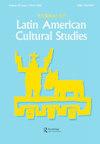Introduction: Visualities in Conflict. Andrea Noble, an Appreciation
IF 0.3
4区 社会学
Q4 CULTURAL STUDIES
引用次数: 0
Abstract
In the opening paragraph of her 2000 study of the work of the Italian-American photographer Tina Modotti, Andrea Noble (1968-2017) described writing about photography as, in the first instance, a metaphorical process of unwrapping. Reflecting on an anecdote published in Vogue magazine about a man who appeared at the front desk of the Museum of Modern Art in New York in the early 1950s bearing a large brown paper parcel with a collection of Modotti prints, Noble poses a number of questions as we imaginatively unwrap the package with her: who was this man, why did he make this donation now, what did the prints represent, what would happen to them once inside the museum? Beyond these circumstantial questions, the image of the parcel “conjures up an image of concealment, containment and mystery” (Noble 2000, x). The next stage, though, is an inverse one: a reading process that Andrea describes as “a form of re-wrapping” that requires her not only to appraise the works via critical methodologies but also to interrogate the terms of the original wrapping itself. This new critical re-wrapping is as multifarious as it is incomplete. Firmly committed as she is to both feminist scholarship (strongly influenced by the feminist art historian Griselda Pollock) and to the analysis of Mexican visual culture, Andrea steadfastly refuses to limit her understanding of Modotti’s work to one or other critical or contextual framework. As she co-wrote with Thy Phu and Erina Duganne in her last book, Cold War Camera – a work that turned out to be tragically posthumous on Andrea’s part – and drawing on Walter Benjamin’s idea of the constellation, “the meaning of a photograph (... ) is never finished but exceeds the moment of its taking” (Phu, Duganne, and Noble 2023, 14). In understanding photography and, elsewhere, cinema as complex cultural practices rather than mere objects or artefacts, Andrea seeks to maintain her objects of study in a state of revelatory suspense, as it were: a position from which they can be understood without being labelled, apprehended without being seized. In her short but brilliant career as a self-described “‘reader’ of visual culture” (2000, xi), Andrea Noble was a pre-eminent scholar of Latin American and, in particular, Mexican photography and film. Deftly interweaving close reading,引言:冲突中的视觉效果。安德里亚·诺布尔,感谢
安德里亚·诺布尔(Andrea Noble,1968-2017)在2000年对意大利裔美国摄影师蒂娜·莫多蒂(Tina Modotti)作品的研究的开头一段中,将关于摄影的写作描述为一个隐喻性的展开过程。回忆起《Vogue》杂志上发表的一则轶事,一名男子在20世纪50年代初出现在纽约现代艺术博物馆的前台,手里拿着一个装着莫多蒂版画的棕色大包裹。当我们想象着与她一起打开包裹时,诺布尔提出了许多问题:这个人是谁,他为什么现在捐款,这些版画代表了什么,一旦进入博物馆,他们会发生什么?除了这些间接的问题,包裹的图像“让人联想到隐藏、遏制和神秘的图像”(Noble 2000,x)。然而,下一个阶段是相反的:安德里亚将阅读过程描述为“一种重新包装的形式”,这不仅要求她通过批判性的方法来评价作品,还要求她质疑原始包装本身的术语。这种新的批判性重新包装既不完整,也很复杂。安德里亚坚定地致力于女权主义学术(受到女权主义艺术历史学家格里塞尔达·波洛克的强烈影响)和墨西哥视觉文化的分析,她坚决拒绝将她对莫多蒂作品的理解局限于一个或其他批评或语境框架。正如她在上一本书《冷战相机》中与Thy Phu和Erina Duganne合著的那样,这本书是Andrea不幸去世后的作品,并借鉴了Walter Benjamin对星座的想法,“照片的意义(…)永远不会结束,而是超越了拍摄的时刻”(Phu,Duganne,and Noble 2023,14)。在将摄影和其他地方的电影理解为复杂的文化实践,而不仅仅是物体或人工制品时,Andrea试图将她的研究对象保持在一种启示性的悬疑状态:一种可以在不被贴标签、不被抓住的情况下理解它们的位置。安德里亚·诺布尔(Andrea Noble)在她短暂而辉煌的职业生涯中自称为“视觉文化的阅读者”(2000年,xi),是拉丁美洲,尤其是墨西哥摄影和电影领域的杰出学者。巧妙地交织细读,
本文章由计算机程序翻译,如有差异,请以英文原文为准。
求助全文
约1分钟内获得全文
求助全文

 求助内容:
求助内容: 应助结果提醒方式:
应助结果提醒方式:


